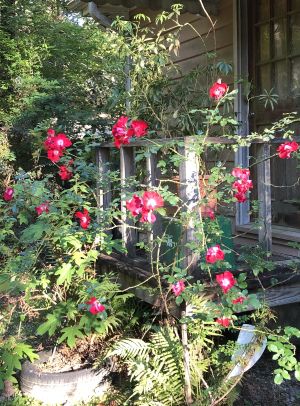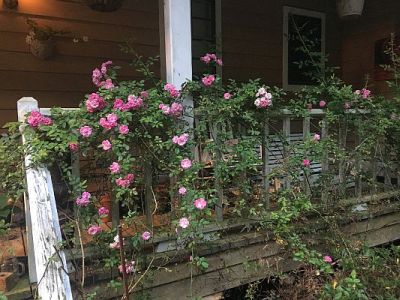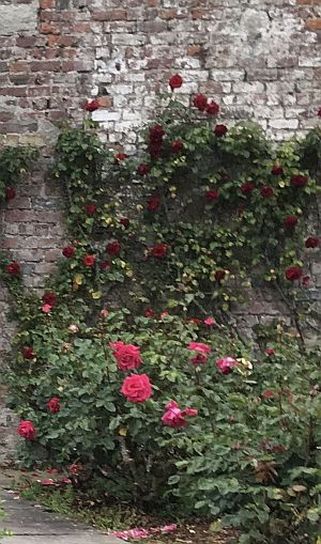Climbing Roses
A climbing rose can be a climber or rambler. A climber is any rose that grows 12 inches to 15 inches or more. Climbers come in a variety of sizes including miniature flower blooms from 6 feet to 30 feet. Ramblers, more currently known as hybrid wichuriana or hybrid multiflora, only bloom once a year and are very long and sometimes reach 30 feet tall and many are fragrant.
These roses require some support to keep them upright or off the ground because they do not climb on their own. Any rose with long canes can be trained on a structure like a pillar, fence, trellis or other supports making a strong vertical accent. Tie canes loosely to a support structure, using soft ties that do not cut into canes.
Many roses grow tall and can be trained to grow wide. Let climbing roses grow all the way to their potential length, train them onto a supportive structure and spread out the canes as much as possible. It will be ready to bloom the next year or 2 on the lateral canes. Deadheading the blooms will produce repeat blooms in summer. Prune out several of the old canes that are not producing as many flowers letting some new canes thrive. Dead, damaged, spindly and unwanted canes should be cut out as close to the base as possible instead of just trimmed back in early spring. Ramblers that bloom once a year may be pruned after bloom if needed. Repeat Bloomers may be pruned in February if needed.

Most old climbers bloom only 1 time a year for several weeks but they can put on a spectacular show. Choose climbers with recurrent blooms for best effect. Use trellises, pergolas, arches to support climbers as screens fences to decorate buildings.
The best time to plant climbing roses is January or February but they can be planted later in the year. Plant the same as others roses in well drained slightly sandy soil with at least 6 to 8 hours of full sun. Fertilize in February and every 6 weeks with small amounts of Nitrogen fertilizer until August. Fertilize in early spring and treat for pests and diseases if needed.
Some favorites are Don Juan, New dawn, Golden Showers, Peggy Rose and many more. Check with local Garden Centers.

By Karen Blackburn



